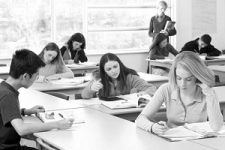What do you mean by Cognitive Access to Curriculum?

Individuals with physical or sensory disabilities may encounter barriers when using traditional materials such as books, paper and pencil, keyboards, audiotapes without text equivalents, or videos lacking captions or audio descriptions. Broadly speaking, ensuring physical access to the curriculum includes enabling sensory and motor access (such as the ability to see text and […]
Understanding the Types of Temperament and Learning

Keirsey stated that there are four types of temperament. Understanding the different types of temperament is important to determine how we should deal with students in our classroom. The different types can be characterized by the following:
Sensible, Adaptable, Active (SP)
33% people have this temperament. They have a combination of sensate qualities and perceiver […]
Harnessing Intrapersonal Intelligence

The intrapersonal intelligence of students needs to be harnessed efficiently in the classroom.
When new information, ideas and surroundings present challenges, a learner with strong intrapersonal intelligence may find comfort and security within themselves. This self-insight can be a way of understanding other people too. Access to one’s emotional life is important to tap […]
Harnessing Spatial Intelligence in the Classroom

Spartial intelligence is one of eight different modalities or ways to demonstrate intellectual ability and individual style, according to Howard Gardner’s Theory of Multiple Intelligences that receives wide acceptance.
Mapping, drawing and doodling
A student with strong spatial intelligence best understands when seeing a picture. This learner perceives the world accurately and tries to recreate […]
Inclusive Curriculum – A Step Towards Accommodating All Learners

Individuals with physical or sensory disabilities may encounter barriers when using traditional materials such as books, paper and pencil, keyboards, audiotapes without text equivalents, or videos lacking captions or audio descriptions. Broadly speaking, ensuring physical access to the curriculum includes enabling sensory and motor access (such as the ability to see text and […]



